
Plantation shutters are a timeless and elegant window covering option that adds charm and functionality to any home. When selecting plantation shutters, one crucial factor is the material they are made from. With various options available in the market, it can be overwhelming to determine which material is the best fit for your specific needs. In this comprehensive guide, we delve into the key considerations and compare different materials for plantation shutters to help you make an informed decision.
Why Material Matters for Plantation Shutters
Plantation shutters are functional window coverings and significantly enhance your home’s aesthetics and overall ambiance. The material you choose for your plantation shutters can profoundly impact their appearance, durability, energy efficiency, and functionality. Understanding the importance of material selection will help you make an informed decision that aligns with your preferences and requirements.
Aesthetics
The material of your plantation shutters greatly influences the visual appeal of your windows and interior space. Different materials offer distinct textures, finishes, and colors, allowing you to achieve various design styles. For example, wood shutters exude a classic and warm feel, while vinyl shutters can provide a sleek and modern look. Considering your home’s decor and architectural style will help you select a material that complements your aesthetic vision.
Durability
Durability is a crucial factor to consider when choosing plantation shutter materials, as they need to withstand daily usage, sunlight exposure, and environmental conditions. Wood shutters, particularly those made from hardwoods like basswood or oak, are known for their strength and longevity. Vinyl shutters, on the other hand, are highly resistant to moisture, fading, and warping, making them suitable for areas with high humidity or moisture levels. Finally, composite shutters balance durability and affordability, as they are designed to withstand various climates without compromising strength.
Energy Efficiency
Plantation shutters can contribute to energy efficiency by providing insulation and light control. The material of the shutters affects their ability to block out heat or cold from outside, reducing the need for excessive heating or cooling. In addition, wood shutters’ natural insulation properties can help regulate indoor temperatures and minimize energy consumption. Some composite shutters are also engineered with insulating cores that enhance energy efficiency. Understanding the energy-saving potential of different materials can help you create a more comfortable and cost-effective living environment.
Functionality
The functionality of your plantation shutters is influenced by the material’s weight, louvers’ flexibility, and ease of operation. Wood shutters are typically sturdy and offer customizable options for louver size and control mechanisms. Vinyl shutters, being lightweight, are easy to operate and require minimal maintenance. Considering your specific requirements, such as light control, privacy, and ease of use, will ensure that your chosen material aligns with your functional needs.
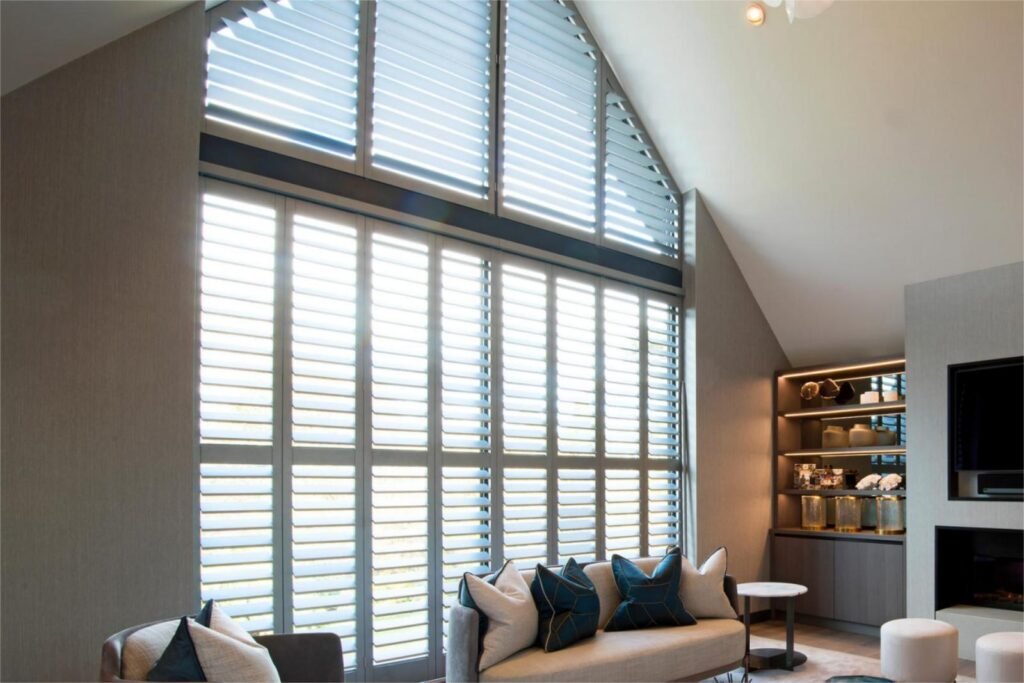
Wooden Shutters: The Classic Choice
Wooden plantation shutters have a timeless appeal and natural beauty that can enhance the aesthetics of any home. In addition, they bring a touch of elegance and warmth to your interior space. When considering wooden shutters, it’s essential to understand the differences between hardwood and softwood options and how to care for them to ensure longevity.
Timeless Appeal and Natural Beauty
Wooden shutters exude a classic and sophisticated charm that can elevate the overall ambiance of your home. Wood’s grain patterns and texture add a natural and organic element to your windows, creating a warm and inviting atmosphere. In addition, wood shutters can seamlessly blend with various interior design styles, from traditional to contemporary, making them versatile.
Hardwood vs. Softwood
Wooden shutters are typically available in hardwood and softwood options, each with strengths and weaknesses.
Hardwood: Hardwood shutters, such as those made from basswood, oak, or maple, offer exceptional durability and strength. They are less prone to denting and are known for their longevity. Hardwood shutters have a smooth and even grain, allowing for a consistent finish. In addition, they provide excellent insulation, noise reduction, and light control. However, hardwood shutters tend to be more expensive than softwood options.
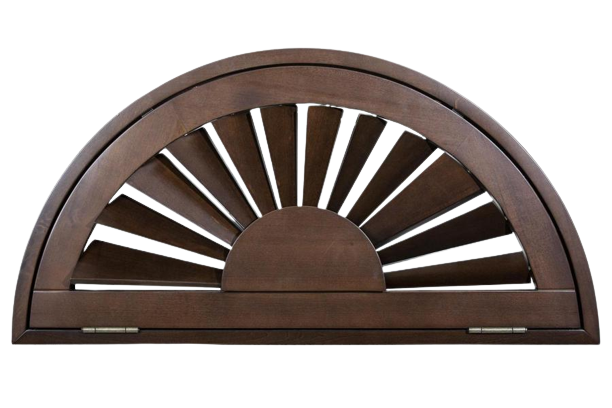
Softwood: Softwood shutters, like those made from pine or cedar, are more affordable than hardwood shutters. They have a natural, distinct grain pattern that adds character to the shutters. While softwood shutters may be slightly less durable than hardwood options, they are still sturdy and suitable for most residential applications. Proper finishing and sealing can enhance their longevity.

Caring for Wooden Shutters
To ensure the longevity and beauty of your wooden shutters, it’s essential to follow proper care and maintenance practices:
- Regular Cleaning: Dust the shutters regularly using a soft, dry cloth or a feather duster. Avoid using harsh chemicals or abrasive cleaners that can damage the wood finish.
- Spot Cleaning: For stubborn stains or marks, lightly dampen a cloth with mild soap and water. Gently clean the affected area and immediately dry it with a clean cloth.
- Avoid Excessive Moisture: Wood is sensitive to moisture, so avoid using excessive water or steam when cleaning. Additionally, ensure the shutters are not exposed to high humidity or damp environments to prevent warping or rotting.
- Protect from Sunlight: Direct sunlight can fade and damage the wood over time. Consider using curtains or blinds to shield the shutters from intense sunlight during peak hours.
- Periodic Inspection: Regularly inspect the shutters for any signs of damage, loose hinges, or misaligned louvers. Address any issues promptly to prevent further damage and maintain their functionality.
- Refinishing or Repainting: The wood may show signs of wear over time or require a color change. Consult a professional or follow manufacturer guidelines if you refinish or repaint your wooden shutters.
By following these care tips, you can ensure that your wooden plantation shutters retain their beauty and durability for years. Proper maintenance will help protect them from damage and preserve their timeless appeal, adding value to your home.
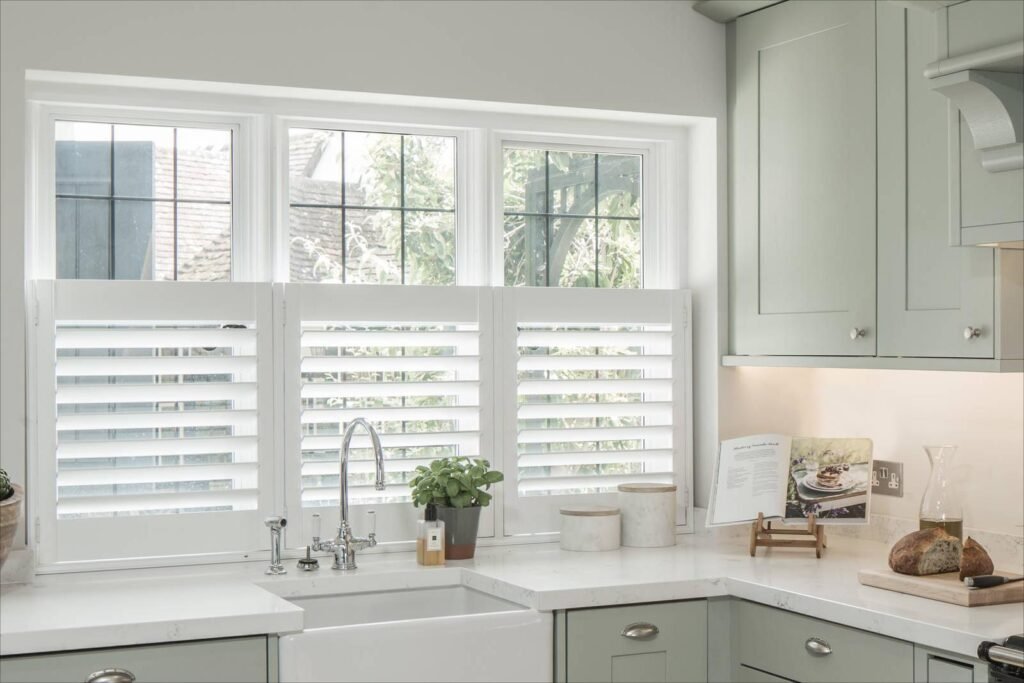
Vinyl Shutters: The Practical Alternative
Vinyl plantation shutters offer a practical alternative to wood, with their affordability and low-maintenance benefits. As a result, they are a popular choice for homeowners seeking durable and easy-to-care-for window coverings. In this section, we will showcase the advantages of vinyl shutters, explain the different types of vinyl materials available, and provide guidance on cleaning and maintaining them for optimal performance.
Affordability and Low-Maintenance
Vinyl shutters are often more budget-friendly than wood or other materials, making them an attractive option for cost-conscious homeowners. They require minimal upkeep, saving you time and effort. Vinyl shutters resist fading, chipping, peeling, and warping, making them ideal for high-humidity areas like bathrooms or kitchens.
Types of Vinyl Materials and Their Suitability
There are different types of vinyl materials used for plantation shutters, each with its characteristics and suitability for different environments:
- Solid Vinyl: Solid vinyl shutters are made entirely of vinyl, providing excellent durability and resistance to moisture. They are well-suited for areas with high humidity, such as bathrooms or laundry rooms.
- Hollow Vinyl: Hollow vinyl shutters are lightweight and typically less expensive than solid vinyl. They offer good insulation properties and are suitable for most residential applications.
- Composite Vinyl: Composite vinyl shutters combine vinyl with other materials, such as aluminum or fiberglass, to enhance their strength and rigidity. These shutters are designed to withstand harsh weather conditions and are suitable for indoor and outdoor use.
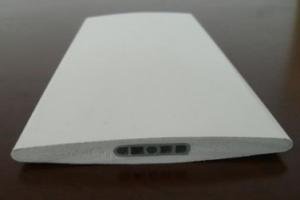

Consider the specific needs of each room when choosing the type of vinyl material. For example, solid vinyl is an excellent choice for moisture-prone areas, while hollow vinyl or composite vinyl may be suitable for other spaces.
Cleaning and Maintenance
Cleaning vinyl shutters is a straightforward process, and they require minimal maintenance to keep them looking their best:
- Regular Dusting: Use a soft cloth or a duster to remove dust and debris from the surface of the shutters. Regular dusting prevents the accumulation of dirt and maintains its appearance.
- Spot Cleaning: If there are stains or spots on the shutters, use a mild detergent mixed with warm water. Dampen a soft cloth with the solution and gently wipe the affected areas. Rinse with clean water and dry with a cloth.
- Avoid Harsh Chemicals: Avoid using abrasive or chemical-based cleaners that can damage the vinyl material. Stick to mild, non-abrasive cleaners to preserve the integrity of the shutters.
- Inspect for Damage: Periodically inspect the shutters for any signs of damage, such as loose parts or cracks. Address any issues promptly to prevent further damage and ensure their proper functionality.
- UV Protection: Although vinyl shutters resist fading, prolonged exposure to direct sunlight can still affect their color. Consider using curtains or blinds to protect the shutters from intense sunlight during peak hours.
Following these cleaning and maintenance tips, you can keep your vinyl plantation shutters in excellent condition. Their affordability, durability, and low-maintenance nature make them a practical choice for homeowners seeking hassle-free window coverings.
Composite Shutters: The Modern Blend
Composite shutters are engineered using a combination of materials, typically a blend of wood fibers, PVC, and other synthetic components. This composition results in a sturdy and durable shutter that offers the best qualities of each material. In addition, composite shutters are known for their resistance to warping, fading, cracking, and moisture damage, making them suitable for various environments.
Composition and Characteristics
The specific composition of composite shutters may vary depending on the manufacturer, but the primary materials used include:
- Wood Fibers: Wood fibers provide strength and stability to the composite material. They contribute to the shutter’s solid structure and resistance to warping.
- PVC (Polyvinyl Chloride): PVC is a synthetic material with excellent durability, moisture resistance, and low maintenance. It helps protect the composite shutters from moisture damage, cracking, and fading due to sunlight exposure.
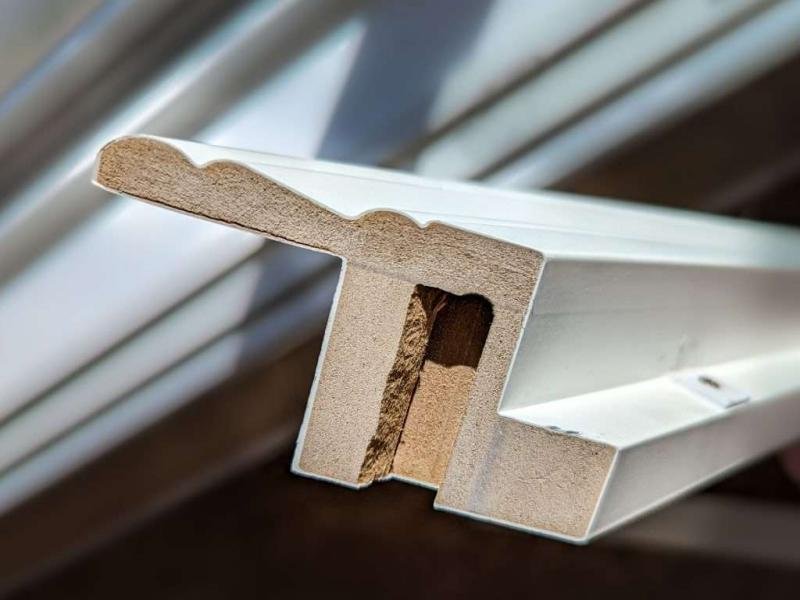
Cleaning and Maintenance
Cleaning and maintaining composite shutters is relatively simple and requires minimal effort. Follow these tips to ensure their extended durability:
- Regular Dusting: Use a soft cloth or a duster to remove dust and debris from the surface of the shutters. Regular dusting prevents the accumulation of dirt and maintains its appearance.
- Mild Soap and Water: Use a mild soap and water solution for tougher stains or dirt. Dampen a soft cloth with the solution and gently wipe the shutters. Rinse with clean water and dry with a cloth.
- Avoid Harsh Chemicals: Avoid using abrasive cleaners or solvents that can damage the composite material. Stick to mild, non-abrasive cleaners to preserve the integrity of the shutters.
- Inspect for Damage: Periodically inspect the shutters for any signs of damage, such as cracks or loose parts. Address any issues promptly to prevent further damage and ensure their proper functionality.
- UV Protection: While composite shutters are designed to resist fading, prolonged exposure to direct sunlight can still affect their color over time. Consider using curtains or blinds to protect the shutters from intense sunlight during peak hours.
Following these cleaning and maintenance guidelines, you can keep your composite plantation shutters in excellent condition. Their strength, durability, and aesthetic versatility make them a stylish and practical choice for homeowners seeking durable window coverings.
Choosing the Best Material for Your Plantation Shutters
When selecting the best material for your plantation shutters, it’s essential to consider various factors such as aesthetics, durability, energy efficiency, and functionality. Here’s a summary of the key points discussed for each material, along with practical tips for evaluating your specific needs and preferences.
Wood: The Classic Choice
- Timeless appeal and natural beauty
- Hardwood offers durability and strength (e.g., basswood, oak)
- Softwood provides affordability and character (e.g., pine, cedar)
- Proper care ensures longevity (regular cleaning, moisture protection)
Vinyl: The Practical Alternative
- Affordability and low maintenance
- Solid vinyl for high humidity areas, hollow vinyl for most residential applications, and composite vinyl for enhanced strength
- Easy cleaning and minimal upkeep (regular dusting, spot cleaning with mild solutions)
Composite: The Modern Blend
- Combination of wood fibers and PVC for enhanced durability
- Resistant to warping, fading, cracking, and moisture damage
- Easy cleaning with mild soap and water (avoid harsh chemicals)
To evaluate your specific needs and preferences:
- Consider your desired aesthetic and how different materials align with your interior design style.
- Assess the durability requirements based on the room’s conditions, such as high humidity or direct sunlight exposure.
- Determine the level of maintenance you are willing to undertake and the longevity you expect from the shutters.
- Consider the functional aspects you prioritize, such as light control, insulation, or ease of operation.
Making an informed decision based on your unique circumstances is crucial. Consult with professionals or visit showrooms to see and feel the materials firsthand. Request samples or swatches to compare with your existing decor and visualize how each material would look in your home.
Remember that the best material for plantation shutters depends on your needs and preferences. By considering the key factors discussed and evaluating your specific requirements, you can select the material that offers the perfect blend of aesthetics, durability, energy efficiency, and functionality for your home.

Leave a Reply